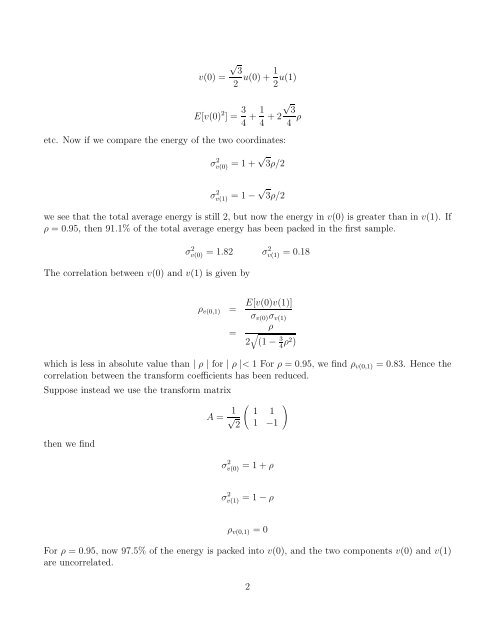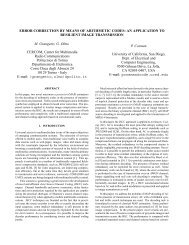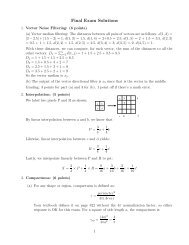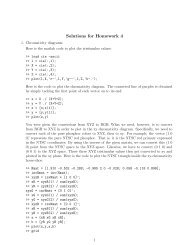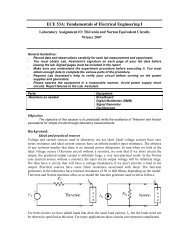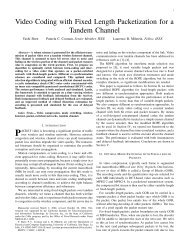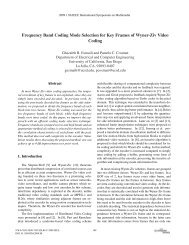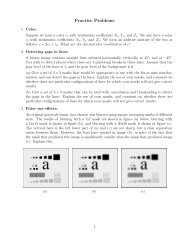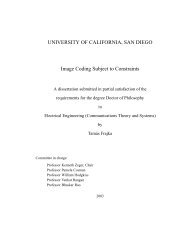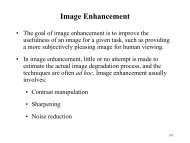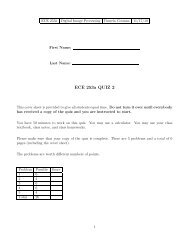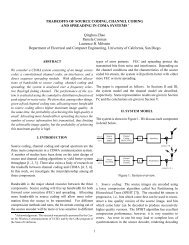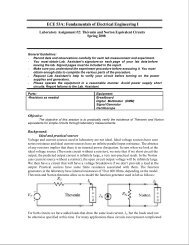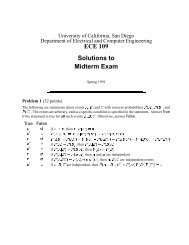Quantitative Example of Energy Compaction and Decorrelation
Quantitative Example of Energy Compaction and Decorrelation
Quantitative Example of Energy Compaction and Decorrelation
You also want an ePaper? Increase the reach of your titles
YUMPU automatically turns print PDFs into web optimized ePapers that Google loves.
√<br />
3 1<br />
v(0) = u(0) +<br />
2 2 u(1)<br />
E[v(0) 2 ] = 3<br />
√<br />
1 3<br />
+ + 2<br />
4 4 4 ρ<br />
etc. Now if we compare the energy <strong>of</strong> the two coordinates:<br />
σ 2 v(0) = 1 + √ 3ρ/2<br />
σ 2 v(1) = 1 − √ 3ρ/2<br />
we see that the total average energy is still 2, but now the energy in v(0) is greater than in v(1). If<br />
ρ = 0.95, then 91.1% <strong>of</strong> the total average energy has been packed in the first sample.<br />
σ 2 v(0) = 1.82 σ2 v(1)<br />
The correlation between v(0) <strong>and</strong> v(1) is given by<br />
ρv(0,1) = E[v(0)v(1)]<br />
=<br />
σv(0)σv(1)<br />
ρ<br />
= 0.18<br />
2 <br />
(1 − 3<br />
4 ρ2 )<br />
which is less in absolute value than | ρ | for | ρ |< 1 For ρ = 0.95, we find ρv(0,1) = 0.83. Hence the<br />
correlation between the transform coefficients has been reduced.<br />
Suppose instead we use the transform matrix<br />
then we find<br />
A = 1 √ 2<br />
σ 2 v(0)<br />
σ 2 v(1)<br />
<br />
1 1<br />
1 −1<br />
= 1 + ρ<br />
= 1 − ρ<br />
ρv(0,1) = 0<br />
For ρ = 0.95, now 97.5% <strong>of</strong> the energy is packed into v(0), <strong>and</strong> the two components v(0) <strong>and</strong> v(1)<br />
are uncorrelated.<br />
2


